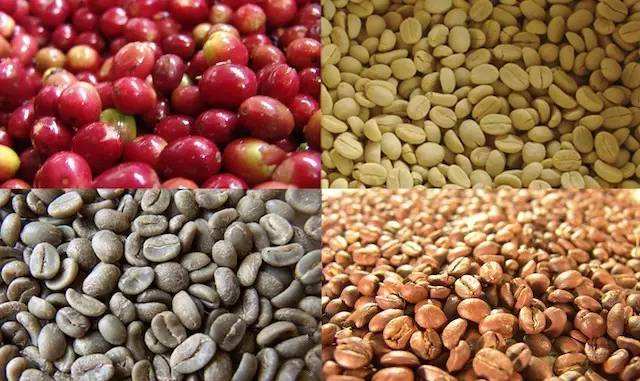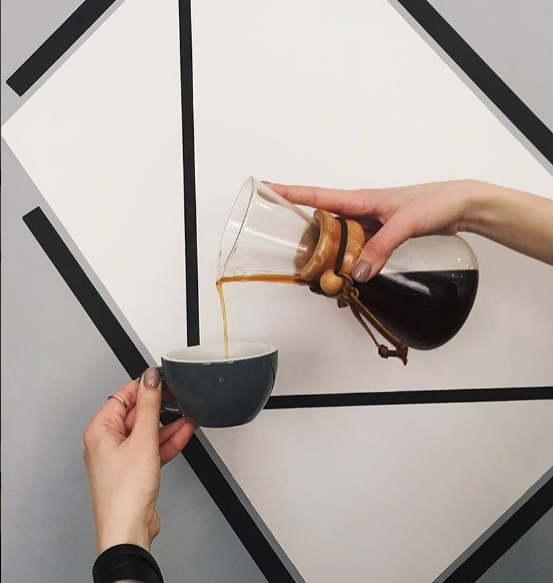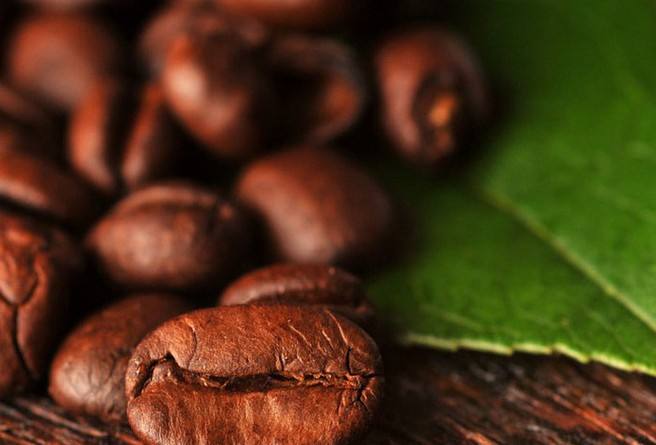Introduction of Robusta Coffee Tree species
Follow the caf é (Wechat official account vdailycom) and found that Beautiful Cafe opened a small shop of its own.
The leaf rust-resistant varieties found in Congo in Africa have stronger disease resistance than Arabica. In the general coffee market, many people like to compare robusta and Arabica coffee beans, which is incorrect. In fact, the Robusta species was originally a mutant of the Congo species (scientific name: Coffee Canephora), and it should be compared with the Alabica species. Today, however, the Robusta species is commonly used by ordinary people, and it is not known that it is actually a variant of the Congolese species.
Robusta kind of Ken has a unique aroma (known as "Rob flavor", some people mainly moldy smell) and bitter taste. If 23% of the coffee is mixed with other coffee, the whole cup of coffee will become Rob flavor (therefore, Robusta coffee beans can not be drunk as individual coffee beans). Its flavor is so bright and strong, but if you want to taste it directly, you have to be prepared. In general, robusta coffee is used in instant coffee (which extracts about twice as much liquid as Arabica), canned coffee, liquid coffee and other industrial coffees. Its caffeine content is much higher than that of Arabica, about 3.2%.

The coffee tree planted by Robusta is a kind of tree between shrubs and tall trees. Its leaves are long and bright green. The tree can be up to 10 meters high, but its roots are very shallow. The fruit is slightly rounder and smaller than Arabica coffee. The bean body is flat and round. The middle pit is straight.
The output of Robusta species accounts for 25% of coffee bean production, which accounts for 25% of coffee bean production. Its main producing country is Indonesia (one of its coffee beans is a kind of coffee bean processed by washing method, which is a hybrid between Robusta and Arabica. It is the only coffee bean on the Chinese market that can be used as a single drink), Vietnam, Africa, (Ivory Coast, Nigeria, Angola as the center of the West African countries), Vietnam has been more committed to coffee production in recent years, and included it in the national policy (Vietnam also produces a small number of Arabica coffee beans).
There are many varieties of coffee beans, the most representative of which are two kinds of Arabica and Robusta. Arabica has a slightly bitter taste and a smooth taste. Order a cup to taste slowly, full of nut aroma changeable and rich, people are infatuated. But American coffee companies have found that Arabica coffee trees are expensive to grow and vulnerable to climate and insect pests. One year it was a bumper harvest, but the next year you may lose all your money. Since the frost in 1953, coffee companies have mostly realized that Arabica is too fragile to be the first choice in the long run. They need to find a more reliable coffee bean. Robusta coffee beans are cheap, less affected by climate and many other factors, and the yield is high, but the taste of the coffee made with it is unflattering. For decades, some large coffee manufacturers in the United States have refused to use Robusta beans as raw materials to make coffee. Now that Arabica is in dwindling supply, Maxwell executives are starting to rethink corporate strategy. They figured it might be possible to mix some robusta into the ingredients without damaging the taste of Maxwell coffee. If successful, this mixed coffee will be much cheaper than pure Arabica coffee.
It is important to keep the amount of robusta in mixed coffee as low as possible so that people do not notice this unpopular additive. To ensure that this cost-cutting approach does not drive away customers, Maxwell conducted a sensory experiment. Participants were asked to taste traditional Maxwell coffee and blended coffee together and then make a comparison. As a result, few people can tell the difference between the two. The company decided to adopt this new hybrid system. By adding Robusta to its coffee, Maxwell was able to lower its sales price when competitors had to raise prices. The company's Robusta adventure experiment was soon a great success. Most consumers did not notice the change in the taste of coffee, while the addition of Robusta also reduced the price of coffee. Soon after, other coffee companies followed suit. No one complains about it.
Important Notice :
前街咖啡 FrontStreet Coffee has moved to new addredd:
FrontStreet Coffee Address: 315,Donghua East Road,GuangZhou
Tel:020 38364473
- Prev

How to drink coffee powder to lose weight? Robusta Black Coffee Benefits
Pay close attention to the coffee comment (Weixin Official Accounts vdailycom) and find that the beautiful cafe opens its own small shop. The water temperature: pour boiling water into the cold hand-washing pot, which is basically about 95 degrees Celsius. At this time, grind the beans (I use an electric mill, hand mill or grind well first, or the water will become cold and white), just like DIMLAU said, 95 degrees Celsius.
- Next

The most beloved country in the world
Following Cafe Review (official account vdailycom of Wechat) found that Beautiful Cafe opened a small shop of its own. If you want to ask the country or region that loves Roberta beans most, the first place is Italy, the hometown of espresso! If you narrow it down, to be more precise, the largest amount of robusta beans are used in southern Italy, such as Palermo.
Related
- Detailed explanation of Jadeite planting Land in Panamanian Jadeite Manor introduction to the grading system of Jadeite competitive bidding, Red bid, Green bid and Rose Summer
- Story of Coffee planting in Brenka region of Costa Rica Stonehenge Manor anaerobic heavy honey treatment of flavor mouth
- What's on the barrel of Blue Mountain Coffee beans?
- Can American coffee also pull flowers? How to use hot American style to pull out a good-looking pattern?
- Can you make a cold extract with coffee beans? What is the right proportion for cold-extracted coffee formula?
- Indonesian PWN Gold Mandrine Coffee Origin Features Flavor How to Chong? Mandolin coffee is American.
- A brief introduction to the flavor characteristics of Brazilian yellow bourbon coffee beans
- What is the effect of different water quality on the flavor of cold-extracted coffee? What kind of water is best for brewing coffee?
- Why do you think of Rose Summer whenever you mention Panamanian coffee?
- Introduction to the characteristics of authentic blue mountain coffee bean producing areas? What is the CIB Coffee Authority in Jamaica?

